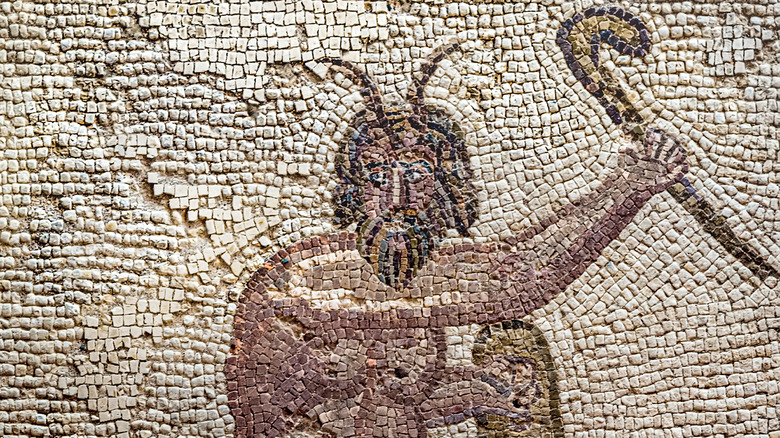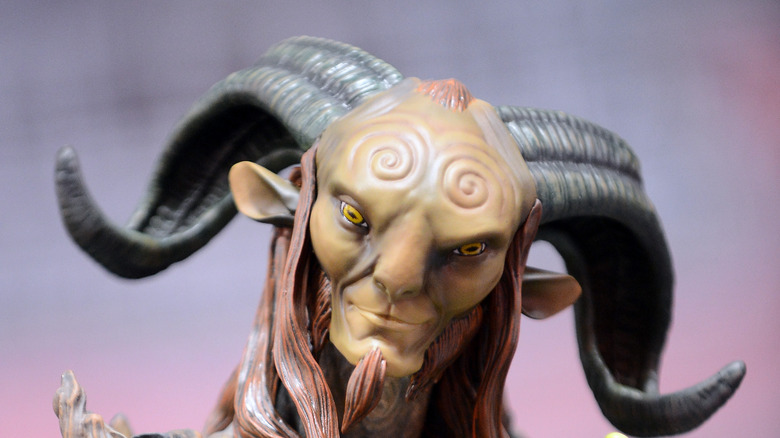The Greek Myth That Pan's Labyrinth Is Based On
Guillermo del Toro's "Pan's Labyrinth" is one of the most iconic horror movies of the 21st century, but the legend of the dark fantasy film stretches back for millennia. The titular Pan was a half-man, half-goat god of wild groves, shepherds, and flocks in ancient Greek mythology and was a son of the messenger god Hermes (via Greek Mythology). His half-goat appearance delighted the other gods, although the nymphs and mortals were less than enthused by his looks.
Pan lived a mostly relaxing, hedonistic life, wandering around the rugged mountains and forests of his homeland Arcadia, chasing nymphs, playing his panpipe, and taking many, many naps. He was known to be lecherous and lustful, but those attractions were often one-sided; many nymphs chose to turn themselves into plants rather than be the object of Pan's desires. This constant sexual rejection was used in the film, but given a dark twist, keeping in line with del Toro's vision.
Pan became the Faun
According to Papers Owl, the film incorporated the mythology of Pan through the Faun, a more twisted take on the god of shepherds. The Faun is half-goat, like his ancient Greek counterpart, but the other half is forest, not man, with tree roots instead of legs and a coating of moss around his body. Also like Pan, the Faun is shown to be lecherous, and makes advances toward the nymph Echo, who in turn rejects him. While this was common for the god Pan, the Faun reacts violently, killing Echo in a display of dominance.
The film is riddled with references to ancient Greek mythology and literature, including nods to Homer's "Odyssey" and the myth of Cronos. The Faun serves as a central stand-in for Pan and guides the main character Ofelia on a series of trials and tests, turning the god of nature and flocks into a sort of dark trickster deity, showing how these stories can still resonate with new meanings centuries on from their origins.

